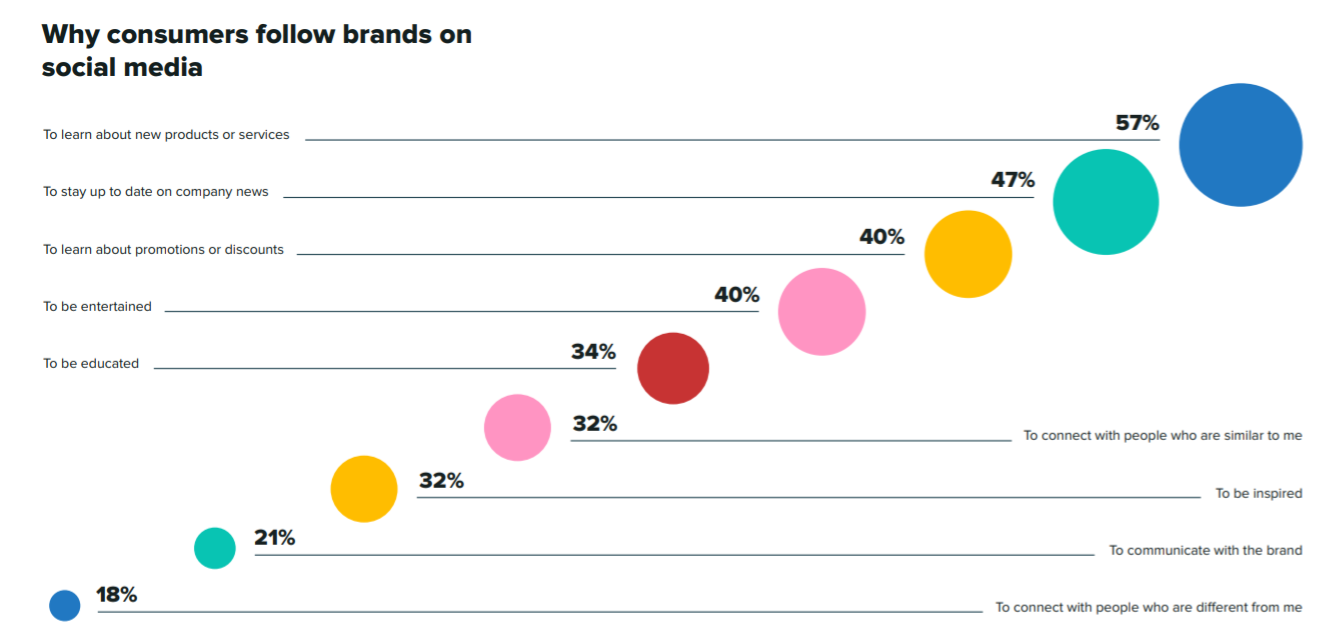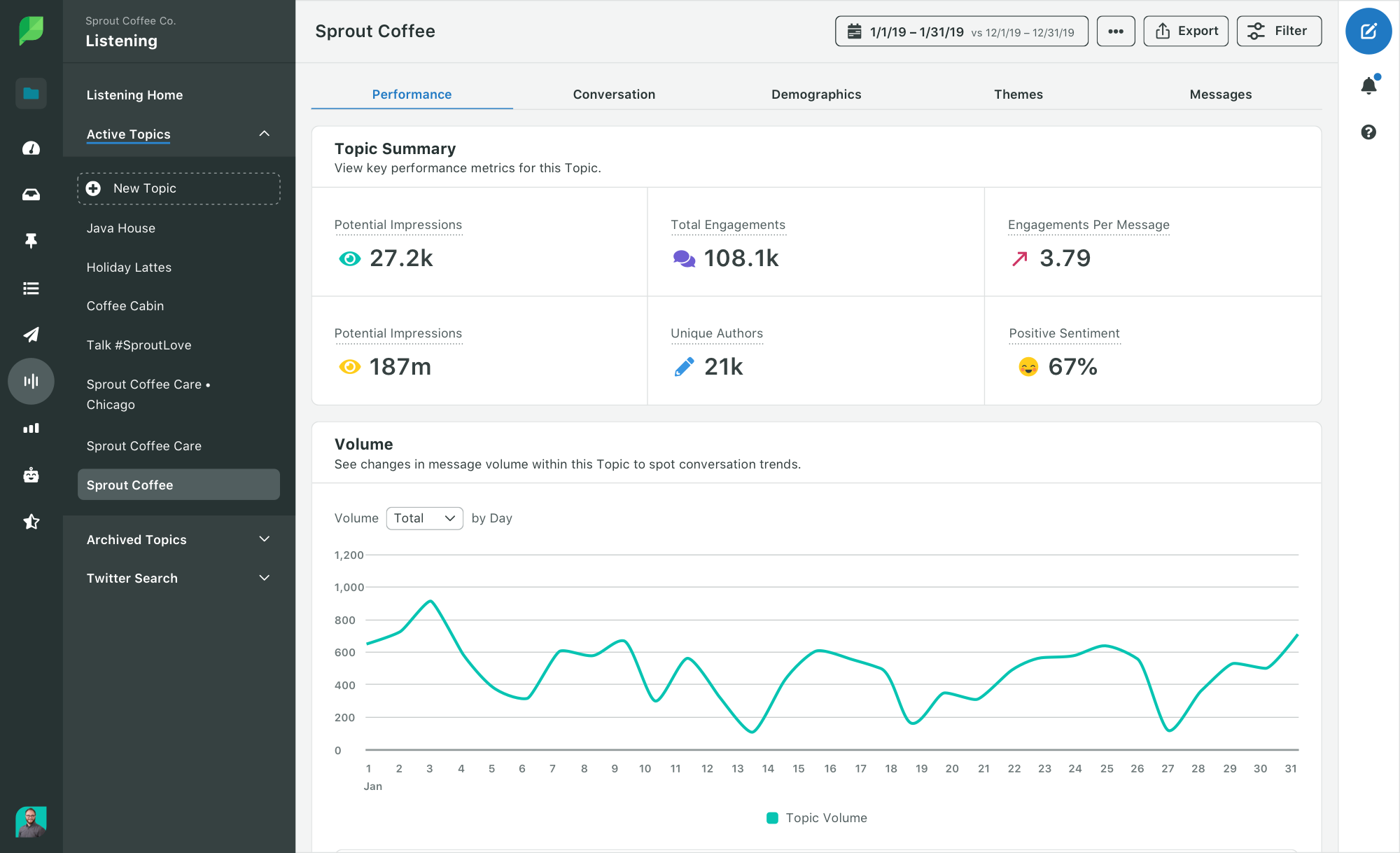Defining a target audience can be one of the most challenging aspects of marketing. But once you have a clear idea of who your audience is, you’ll run more relevant campaigns with better returns.
Here’s a comprehensive guide on how to define a target audience and reach them through social media.
What is a target audience?
First, let’s start by understanding what a target audience actually is. In simplest terms, a target audience refers to the group of people that are most likely to be interested in your product or offer. And members of this group share common traits.
Let’s look at a few examples of target audiences. Canva, the online design tool, has a large target group of designers and design enthusiasts, which could be broken down to how these groups use the tool.
For instance, one of Canva’s target audiences is teachers, who use the tool to create worksheets, infographics or posters.
Share your passion for education by making your classroom not just a classroom but a home. ?
Keep the following suggestions in mind as you create your own positive and valuable classroom culture: https://t.co/ICmbCpUwOh
— Canva (@canva) January 28, 2021
Another major target audience group for Canva is social marketers who need to create captivating visuals for their brand’s social media and digital campaigns.
Take a break from the feed and read how marketing leaders are adapting in 2021!
In partnership with @HubSpot, we surveyed over 500 marketing leaders to understand how they’re planning for growth this year. https://t.co/rq0BNj0VGa pic.twitter.com/ZH13yOHpA2
— Canva (@canva) February 4, 2021
Why should you define your target audience?
Why is defining a target audience so important? Below are some of the top ways in which you can benefit from marketing to a targeted audience:
- Focusing on a few specific target groups allows you to advertise more effectively.
- This also means allocating money and resources on relevant consumer groups.
- Knowing a specific audience group to target also helps solidify a brand voice that resonates. This amplifies your social media branding efforts.
- When you market to a highly specific target audience, you can develop messaging that truly resonates with them. This makes it easier to connect with them and earn their loyalty.
Now that you know how to define a target audience, let’s find out who are target audience is.
Take a closer look at your existing audience
Start by taking a closer look at who are already following you or buying from you. The goal is to identify who wants to engage with you on social media and gain a better understanding of them.
Here are a few questions that’ll help you with this step:
1. Who is your current audience?
Monitor who follows you on social media and interacts with your posts. Who likes, shares, comments on your content? Then narrow down on key common characteristics such as age, location, language, interests and so on.
So who is your target audience? The answer lies with the people who identify with your brand.
2. What kind of information are they looking for and why?
The next question to ask is why and what information is your audience following you for?
Understanding the kind of information followers seek will help with understanding your audience. And you’ll identify their needs and how to approach them on social media.
It’s good to note that people will have different reasons why they follow brands on social media. And you’ll have to adapt your social media content strategy accordingly.
According to the Sprout Social Index™: Above and Beyond, the top four most commons reasons why consumers follow brands on social media are to:
- learn about new products or services (57%)
- stay up to date on company news (47%)
- learn about promotions or discounts (40%)
- be entertained (40%).

3. Where do they go for this information?
Which social media networks does your target audience frequent the most? Based on your research, where have you noticed your audience the most? To make an impact, make sure that you’re reaching your target groups where they’re the most active.
For instance, launching a Twitter campaign doesn’t make sense if a majority of your target audience is most active on Instagram. Understanding what your audience wants and on which platform will define your content strategy.
4. What are they talking about?
This is one of the most critical questions that can give you the most insight about your target audience. Instead of guessing, you’ll know exactly what your audience is talking about.
What are your audiences likes and dislikes? What challenges and what solutions are they looking for? What are they saying about your brand or products? Knowing the answers to these questions will help you narrow down on their biggest pain points and desires.
A platform such as Sprout Social makes distilling through online conversations easy with its social media listening tool. This tool tracks conversations around your brand, examines audience preferences, identifies trending topics and more.

5. Who do they trust?
Trust is important when building relationships with your followers? Think about your social habits: do you trust any brand online? Do online reviews from other customers way your purchase decisions?
Think about how your business handles its reputation as well. Do you respond to all inbound messages or social mentions? Being present for your brand and for your audience is important to build trust and attract your target audience.
Define the key benefits of your products or services
Now that you’ve defined your target audience, how can you solve their pain points with your products or services? What value does your business offer? By defining these pain points and your key benefits, you’ll have a clearer idea on how to best position your business in a way that resonates with your target audience. Plus, this will also help you narrow down the unique advantage that you have over the competition.
One of American Express’s biggest competitive advantages is the loyalty programs it has for customers. And to promote this unique selling point, the company leverages Amex Ambassadors for its social media content strategy.
Earning 4X Membership Rewards points at restaurants with his #AmexGold Card (including takeout & delivery) is one of the many benefits #AmexAmbassador Brian Lindo frequently enjoys. Here he’s dining locally at @12Chairscafe #NYC. Learn more, terms apply: https://t.co/QLgKhFqLZm pic.twitter.com/ff7PhppeML
— American Express (@AmericanExpress) February 5, 2021
Check out the competition
To properly define and reach your target audience, you also need to take a look at what the competition is doing. Ask questions such as:
- What types of people are your competitors targeting?
- How are they reaching out to their target audience?
- What are they doing right?
- What’s missing from their strategy?
- What key benefits are they emphasizing in their marketing?
- How often are they posting?
- Which content formats seem to work the best for them?
- What kind of tone are they using?
Again, Sprout can help uncover these answers with social listening. Create listening topics around your competitors to understand the social chatter around their brands.
Create content for your social media target audience
Now that you have all this insight about your target audience, it’s time to start creating content.
Here are a few best practices to guide you:
- Try A/B testing different content elements, formats, timings and more. As a result, you’ll fine-tune your content strategy to the types of posts your target audience tends to engage with. Monitor what kind of captions they like, which timing works best to engage them and so on.
- Remember to create content for different stages of the purchase funnel. Entertaining content may be great to capture attention at the awareness stage, for example. But for those at the consideration stage, informative and instructional pieces work better.
- Be more direct with your audience research. Instead of assuming or using solely analytics data alone, consider what your followers really think by putting those insights into context. Conduct polls and ask them questions so you can engage them better.
Ready to connect with your target audience?
Now that you’re armed with knowledge to identify and engage with your target audience, you can create a strategy to connect with them. To take it one step further, use our free worksheet on how to create authentic connections with your audience.
This post How to define and reach your target audience on social media originally appeared on Sprout Social.

